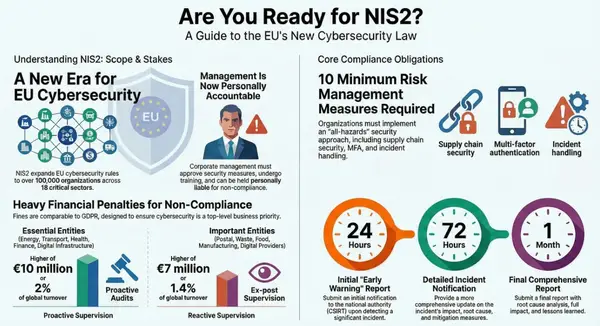Why Financial Institutions Need Virtual CISOs for SEC Regulation S-P Compliance: A Strategic Imperative

The financial services industry stands at a cybersecurity crossroads. With the SEC's amended Regulation S-P taking effect December 3, 2025, for large entities and June 3, 2026, for smaller firms, financial institutions face their most significant data protection overhaul in over two decades. The question isn't whether your organization needs enhanced cybersecurity leadership—it's whether you can afford to build that capability in-house or should leverage proven virtual CISO (vCISO) expertise.
The Regulation S-P Revolution: Beyond Simple Compliance
The SEC's amended Regulation S-P represents a fundamental shift in how financial institutions must approach customer data protection. The amendments require covered institutions to (1) adopt an incident response program and (2) notify affected individuals whose sensitive customer information was, or is reasonably likely to have been, accessed or used without authorization.
This isn't merely about updating policies—it's about implementing comprehensive operational changes that touch every aspect of your cybersecurity program. The program should be designed to "detect, respond to, and recover from unauthorized access to or use of customer information."

Key Compliance Requirements
30-Day Notification Mandate: Perhaps the most challenging requirement is the 30-day customer notification timeline following discovery of a breach involving sensitive customer information. This compressed timeframe demands operational readiness that many institutions currently lack.
Expanded Scope: The amended rule extends coverage to all transfer agents and broadens the definition of protected information beyond traditional customer records. For many organizations, this means fundamentally reassessing data classification and protection mechanisms.
Service Provider Oversight: New requirements for written policies addressing service provider oversight demand due diligence capabilities and ongoing monitoring that many firms find difficult to implement effectively.
Incident Response Programs: As part of this program, you need to be able to assess, contain, and control incidents. This requires sophisticated capabilities that extend far beyond traditional IT security measures.
The Multi-Framework Challenge
Financial institutions don't operate in regulatory isolation. Success demands seamless integration across multiple compliance frameworks including NIST Cybersecurity Framework 2.0, ISO 27001, SOX, GLBA, and FFIEC guidelines. The challenge isn't meeting Regulation S-P requirements in isolation—it's harmonizing these new obligations with existing compliance programs while eliminating redundancies and conflicting controls.
This complexity creates a strategic problem that traditional approaches struggle to address effectively. Internal teams often understand individual requirements but lack the specialized expertise to identify overlaps, eliminate redundancies, and create unified control structures.

Why Internal Teams Fall Short
The cybersecurity leadership gap in financial services has reached critical proportions. CISOs face unprecedented challenges including expanding attack surfaces, sophisticated threats, talent shortages, and budget constraints. The regulatory complexity alone has become a full-time strategic challenge requiring specialized expertise that many organizations cannot develop internally.
The Hidden Costs of Fragmented Compliance
When organizations treat each regulatory requirement as an isolated compliance exercise, they inevitably create:
- Duplicated Controls: Multiple systems performing similar functions across different frameworks
- Conflicting Requirements: Policies that satisfy one regulation while creating gaps in another
- Operational Inefficiencies: Separate processes for similar compliance activities
- Increased Risk: Gaps between frameworks that create vulnerabilities
- Resource Drain: Multiple teams managing overlapping responsibilities
The Virtual CISO Solution: Strategic Leadership Without the Overhead
Acting as an outsourced advisor, a vCISO provides tailored guidance on everything from cybersecurity strategy and regulatory compliance to incident response, ensuring businesses receive the precise level of leadership they need—when they need it.
For Regulation S-P compliance, vCISOs offer distinct advantages that address the unique challenges facing financial institutions:
Framework Integration Expertise
vCISOs bring deep knowledge of multiple compliance frameworks and can identify opportunities to create unified control structures that satisfy multiple regulatory requirements simultaneously. Rather than building separate incident response programs for Regulation S-P, NIST, and FFIEC requirements, a vCISO can design integrated approaches that leverage existing investments while meeting new obligations.
Regulatory Alignment Capabilities
Whether through part-time leadership or project-based support, a vCISO helps organizations align their security strategy, meet compliance standards, and proactively reduce cyber risk. This alignment is crucial for avoiding the conflicts and gaps that emerge when regulations are addressed in isolation.
Rapid Implementation Without Hiring Challenges
With compliance deadlines approaching rapidly, vCISOs can accelerate implementation timelines by leveraging proven methodologies and avoiding common pitfalls. The full-service model is like having a dedicated in-house CISO, but without the full-time employment costs.
Cost-Effective Compliance Integration
Rather than building separate compliance programs for each framework, vCISOs design integrated approaches that reduce overall compliance costs while improving security outcomes. This is particularly valuable given the budget constraints facing many financial institutions.
Strategic Implementation Approach
A vCISO-led approach to Regulation S-P compliance should begin with a comprehensive gap assessment that evaluates current capabilities against new requirements while identifying integration opportunities with existing frameworks. This assessment forms the foundation for a unified compliance roadmap.
Phase 1: Comprehensive Gap Analysis
The vCISO conducts a thorough evaluation of current cybersecurity controls, incident response capabilities, and compliance posture across all relevant frameworks. This analysis identifies not just gaps in Regulation S-P compliance, but opportunities to leverage existing investments in NIST, ISO, or other frameworks.

Phase 2: Integrated Program Design
Based on the gap analysis, the vCISO develops integrated incident response programs that satisfy Regulation S-P requirements while enhancing overall security posture. This includes establishing customer notification processes, service provider oversight mechanisms, and documentation standards that support multiple compliance frameworks simultaneously.
Phase 3: Implementation and Optimization
Throughout the implementation process, the vCISO provides ongoing strategic guidance to ensure that new controls enhance rather than complicate existing security operations. This prevents the common trap of treating each regulatory requirement as an isolated compliance exercise.

The Financial Services Advantage
Wipfli's vCISO services help give your financial institution on-demand access to the knowledge and leadership you need to stay in compliance and keep your data safe. This model is particularly well-suited to the financial services industry because:
Regulatory Expertise: vCISOs specializing in financial services understand the complex interplay between different regulatory requirements and can design solutions that address multiple obligations simultaneously.
Industry-Specific Threats: Financial services face unique cyber threats that require specialized knowledge and response capabilities that vCISOs bring from working across multiple institutions.
Scalable Solutions: vCISOs can scale their involvement based on your institution's size, complexity, and specific compliance timeline requirements.

Making the Strategic Decision
The December 2025 compliance deadline for large financial institutions is approaching rapidly. Organizations must make strategic decisions about cybersecurity leadership now, not when compliance gaps become apparent later in the process.
Evaluating Your Options
Internal Hiring: Building internal CISO capability requires significant time for recruitment, onboarding, and development. With specialized cybersecurity talent in short supply and high demand, this approach may not meet compliance timelines.
vCISO Partnership: Engaging an experienced vCISO provides immediate access to proven expertise, established methodologies, and framework integration capabilities that can accelerate compliance while building long-term cybersecurity maturity.
Questions to Consider
- Can your current cybersecurity leadership effectively integrate Regulation S-P requirements with existing compliance frameworks?
- Do you have the specialized expertise needed to implement comprehensive incident response programs within the required timeline?
- Are you prepared to manage the operational complexity of 30-day breach notification requirements?
- Can you afford the cost and timeline risks of building these capabilities internally?

The Path Forward
The SEC's amended Regulation S-P represents both a compliance challenge and an opportunity for financial services organizations to modernize their cybersecurity programs. Success requires more than checking regulatory boxes—it demands strategic integration of multiple compliance frameworks under unified cybersecurity leadership.
Organizations that engage experienced vCISOs to guide their Regulation S-P compliance efforts will be better positioned to meet regulatory deadlines while building more efficient, effective cybersecurity programs. The question isn't whether to invest in cybersecurity leadership—it's whether to build that capability internally or access proven expertise through strategic vCISO partnerships.
For financial services firms facing the December 2025 deadline, the time for strategic decision-making is now. The complexity of modern cybersecurity compliance demands expertise that goes beyond traditional technical skills—it requires the strategic vision and framework integration capabilities that only experienced cybersecurity leadership can provide.
The choice is clear: invest in comprehensive cybersecurity leadership through proven vCISO partnerships, or risk the operational and regulatory consequences of fragmented compliance approaches. Your institution's cybersecurity future—and regulatory compliance—depends on making the right choice today.
Ready to explore how a virtual CISO can transform your Regulation S-P compliance approach? Connect with our marketplace of experienced cybersecurity leaders who specialize in financial services compliance integration.











